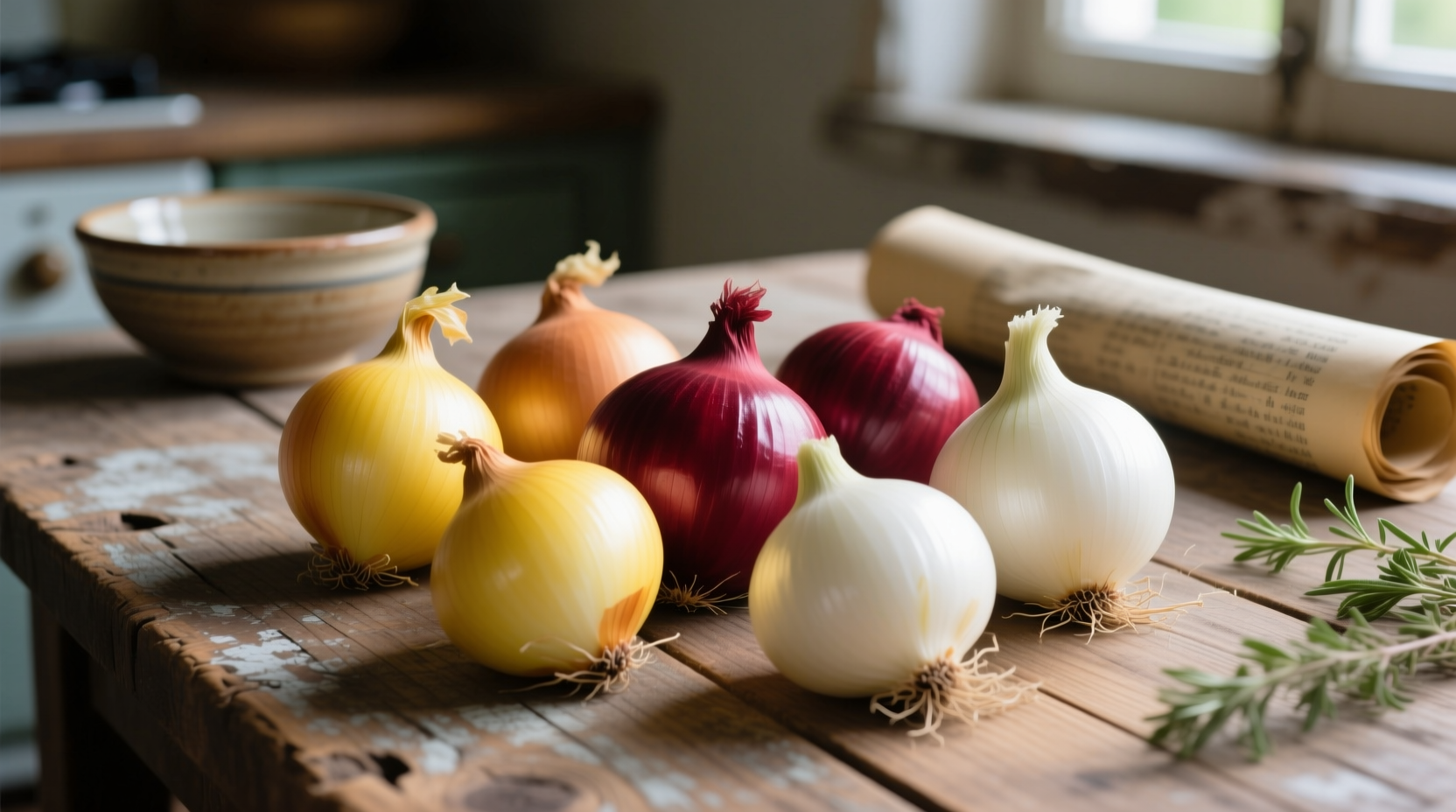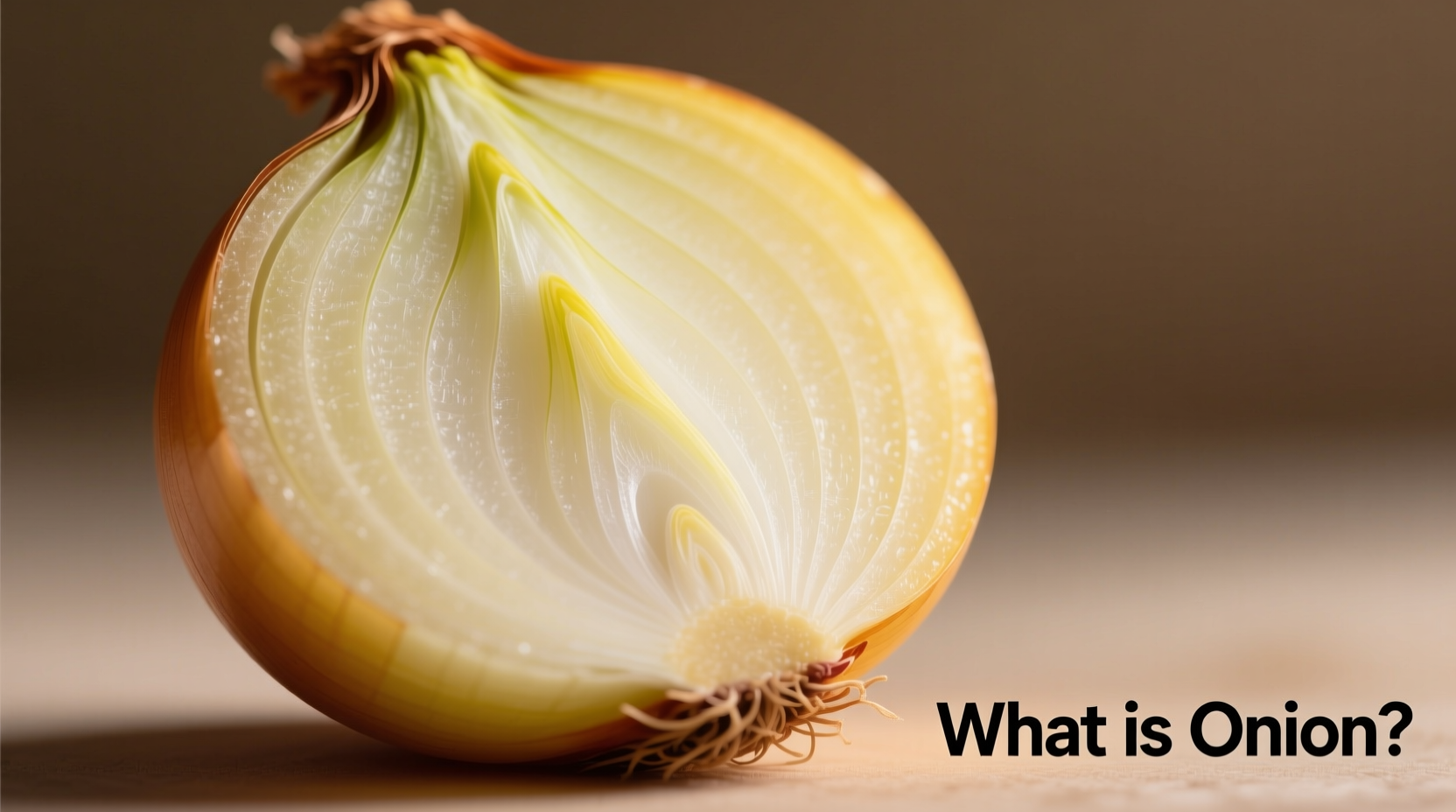An onion is a edible bulb vegetable belonging to the Allium genus, scientifically known as Allium cepa. This versatile kitchen staple features layered flesh enclosed in a papery skin, offering a distinctive pungent flavor that transforms when cooked. Onions contain essential nutrients including vitamin C, B vitamins, and antioxidants like quercetin.
Discover everything you need to know about this culinary cornerstone as we explore its botanical characteristics, nutritional benefits, and practical applications in everyday cooking. Whether you're a home cook, gardening enthusiast, or simply curious about this common vegetable, you'll gain valuable insights that transform how you select, store, and utilize onions.
Understanding Onion Botany and Structure
Onions (Allium cepa) belong to the Amaryllidaceae family, sharing botanical relations with garlic, leeks, and chives. The edible portion develops as a modified underground stem called a bulb, consisting of fleshy leaf bases layered around a central bud. This unique structure serves as the plant's energy storage system.
When you peel an onion, you're removing the dry, papery outer layers known as tunics, which protect the moisture-rich inner layers. The distinctive pungency comes from sulfur-containing compounds that convert to volatile substances when cells are damaged through cutting or crushing.
| Onion Characteristic | Description | Practical Implication |
|---|---|---|
| Botanical Classification | Allium cepa, biennial plant | Grows one year, flowers second year |
| Primary Chemical Compounds | Sulfenic acids, thiosulfinates | Create pungency and health benefits |
| Water Content | 89% water | Contributes to cooking texture changes |
Common Onion Varieties You'll Encounter
Understanding the different onion types helps you select the perfect variety for your culinary needs. Each type offers distinct flavor profiles, colors, and storage capabilities that affect your cooking results.
Yellow onions (also called brown onions) constitute about 87% of onions grown in the United States according to USDA agricultural statistics. Their strong flavor mellows beautifully when cooked, making them ideal for caramelizing, soups, and stews. These versatile onions typically have a golden-brown skin and white to pale yellow flesh.
Red onions feature vibrant purple skin and reddish flesh with a slightly sharper taste. Their crisp texture and color retention make them perfect for salads, salsas, and pickling. The anthocyanins responsible for their color provide additional antioxidant benefits.
White onions offer a clean, sharp flavor that works well in Mexican cuisine and dishes where you want onion flavor without color contribution. They have a thinner skin and higher water content than yellow varieties, making them less suitable for long-term storage.
Sweet onions like Vidalia, Walla Walla, and Maui varieties contain higher sugar content and lower sulfur compounds. These specialty onions (protected by geographical indication in some cases) deliver mild, sweet flavor perfect for raw applications. The University of Georgia's agricultural extension notes that true Vidalia onions can only be grown in specific Georgia counties due to the region's low-sulfur soil.

Nutritional Profile and Health Benefits
Onions deliver impressive nutritional value beyond their flavor contribution. A medium-sized onion (110g) contains approximately 44 calories, 10g of carbohydrates, and 2g of dietary fiber according to USDA FoodData Central. They're particularly rich in vitamin C (providing about 11% of daily value), B vitamins, and manganese.
The real nutritional power comes from onion's phytochemical content. Quercetin, a flavonoid antioxidant concentrated in the outer layers, demonstrates anti-inflammatory properties in multiple peer-reviewed studies. Research published in the journal Nutrients indicates that regular onion consumption may support cardiovascular health through multiple mechanisms including blood pressure regulation.
When preparing onions, remember that cutting triggers enzymatic reactions that create both the familiar eye-irritating compounds and beneficial antioxidants. Allowing cut onions to rest for 5-10 minutes before cooking maximizes these health-promoting compounds according to food science research from the National Onion Association.
Practical Culinary Applications
Mastering onion preparation transforms your cooking results. The technique you use—whether slicing, dicing, or chopping—affects both flavor release and cooking behavior. For consistent results in recipes, aim for uniform pieces that cook evenly.
When cooking onions, temperature control proves crucial. Starting with medium-low heat allows onions to soften gradually without burning. The Maillard reaction begins around 140°C (284°F), creating complex flavor compounds during caramelization. Professional chefs typically dedicate 30-45 minutes to properly caramelized onions, stirring occasionally to prevent sticking.
Raw onion applications benefit from strategic preparation techniques. Soaking sliced onions in ice water for 10-15 minutes reduces pungency while maintaining crisp texture—perfect for salads and sandwiches. For stronger-flavored dishes, adding onions early in the cooking process allows their flavor to mellow and integrate with other ingredients.
Storage and Selection Guidelines
Proper storage extends onion shelf life significantly. Keep dry bulb onions in a cool, dark, well-ventilated space between 45-55°F (7-13°C) with moderate humidity. Never store onions near potatoes, as potatoes release moisture and gases that accelerate onion spoilage.
When selecting onions at the market, look for firm bulbs with dry, papery skins free from soft spots or mold. The neck should feel tight and closed—avoid onions with soft or damp necks as these indicate potential decay. Larger onions often have more layers but may be slightly less flavorful than smaller counterparts of the same variety.
Refrigeration extends the life of cut onions. Store unused portions in an airtight container for up to 7 days. For longer preservation, freeze chopped onions on a baking sheet before transferring to freezer bags—they'll maintain texture for cooking applications for up to 6 months.
Historical Context and Global Significance
Onions rank among humanity's oldest cultivated vegetables, with archaeological evidence dating back to 5000 BCE in Bronze Age settlements. Ancient Egyptians revered onions for their spherical shape and concentric rings, symbolizing eternal life. They've appeared in cultural traditions worldwide—from the Welsh use of leeks (a close onion relative) as a national symbol to the Spanish tomato and onion festivals.
The global onion trade demonstrates their universal culinary importance. China leads worldwide production at approximately 22 million metric tons annually, followed by India and Turkey according to FAO statistics. This widespread cultivation across diverse climates speaks to the onion's agricultural adaptability and enduring culinary value.











 浙公网安备
33010002000092号
浙公网安备
33010002000092号 浙B2-20120091-4
浙B2-20120091-4